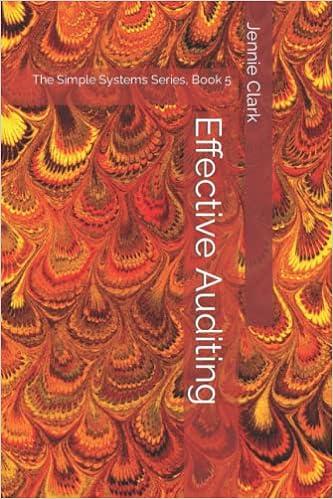Question
DuPont Formula Net Income/Shareholders' Equity = Net Income/Sales * Sales/Total Assets * Total Assets/Shareholders'Equity Return on equity: This represents the amount of net income that
DuPont Formula Net Income/Shareholders' Equity = Net Income/Sales * Sales/Total Assets * Total Assets/Shareholders'Equity
Return on equity: This represents the amount of net income that is generated for each dollar of shareholders equity. It can be interpreted as the amount of net income generated for each dollar of value that a shareholder owns of the company. This number can be either negative or positive.
Profit margin ratio: This represents the amount of net income that is generated for each dollar of sales. It can be interpreted as the percentage of each dollar of sales that the company retains as earnings. Since net income can be negative, this ratio can be either negative or positive.
Asset turnover ratio: This represents the amount of sales that is generated for each dollar of assets the company owns. This is often interpreted as the efficiency of the companyhow many sales it can generate given the assets it owns. Except in very unusual circumstances, this ratio is positive.
Financial leverage ratio: This represents the amount of assets that is financed by shareholders, as opposed to debt holders. Except in very unusual circumstances, this ratio is positive.
Part I: Ask the right questions A significant portion of developing your analytical mindset happens before you analyze data. While you already have a fundamental understanding of the DuPont Method and are aware of the data elements available to you, you have not yet determined the best way to analyze the data to provide the most relevant insights. To gather the most relevant insights, you must start by asking the right questions of the data. In this section, you will first think through the DuPont Method in more detail so you understand some of the business context. From there, you will identify questions for the data that will provide insights to your stakeholder. Assume your stakeholder is an investor whose objective is to make some quality investments in the near future based on the performance of the companies in this data set. Your stakeholder is interested in both an industry recommendation and a company recommendation. Required 1. Describe whether you want a high value or a low value for each ratio, independent of the other ratios. Return on equity: Profit margin ratio: Asset turnover ratio: Financial leverage ratio: 2. The profit margin ratio is the only ratio that makes up ROE that can be negative (except in relatively rare cases). Describe how the interpretation of the Asset Turnover Ratio and the Financial Leverage Ratio change based on whether the Profit Margin Ratio is positive or negative. 3. How can a company improve each ratio? Make sure to discuss how changes in either the numerator or denominator can improve the ratio. For each ratio, do you think it is better to focus on improving the numerator or denominator? 4. Before you analyze the data, it is helpful to develop an expectation of what you think you might see. What industry do you believe will have the highest and lowest values for the 2015 fiscal year for each item below? Why? Return on equity Profit margin ratio Asset turnover ratio Financial leverage ratio
(There are no right or wrong answers for these questions. In answering question 4 consider: Which industries likely have high profit margins? Why? Which industries will need more or fewer assets to generate sales? Why? Are some industries more likely to use debt financing? Why? How does government regulation of public utilities likely influence their ratios? Are there other factors, like government regulation, that can impact these different industries? ) 5. What questions do you want to ask of the data? Think about relevant insights you want to gain for your stakeholder and identify at least five questions that you want to answer.
Step by Step Solution
There are 3 Steps involved in it
Step: 1

Get Instant Access to Expert-Tailored Solutions
See step-by-step solutions with expert insights and AI powered tools for academic success
Step: 2

Step: 3

Ace Your Homework with AI
Get the answers you need in no time with our AI-driven, step-by-step assistance
Get Started


